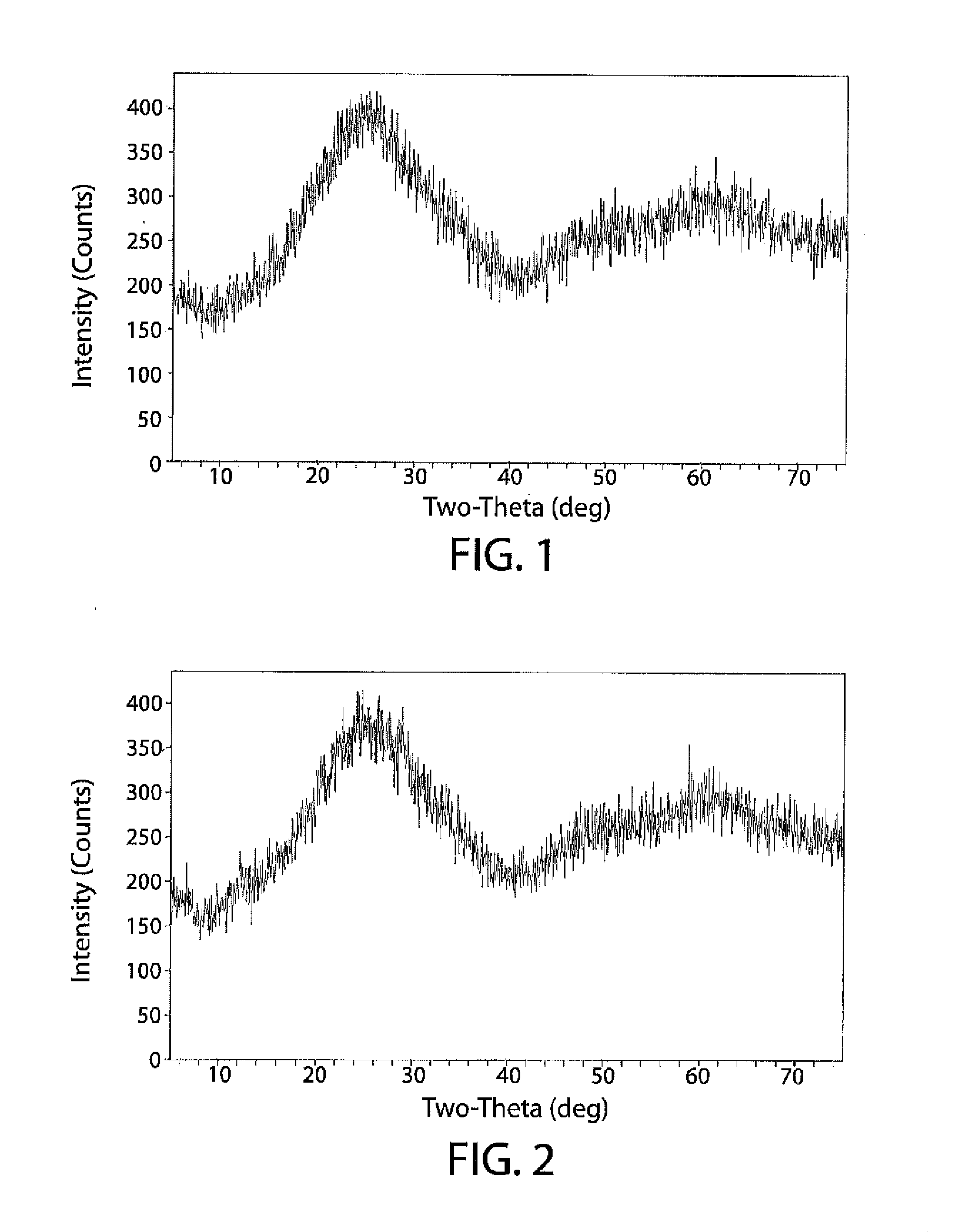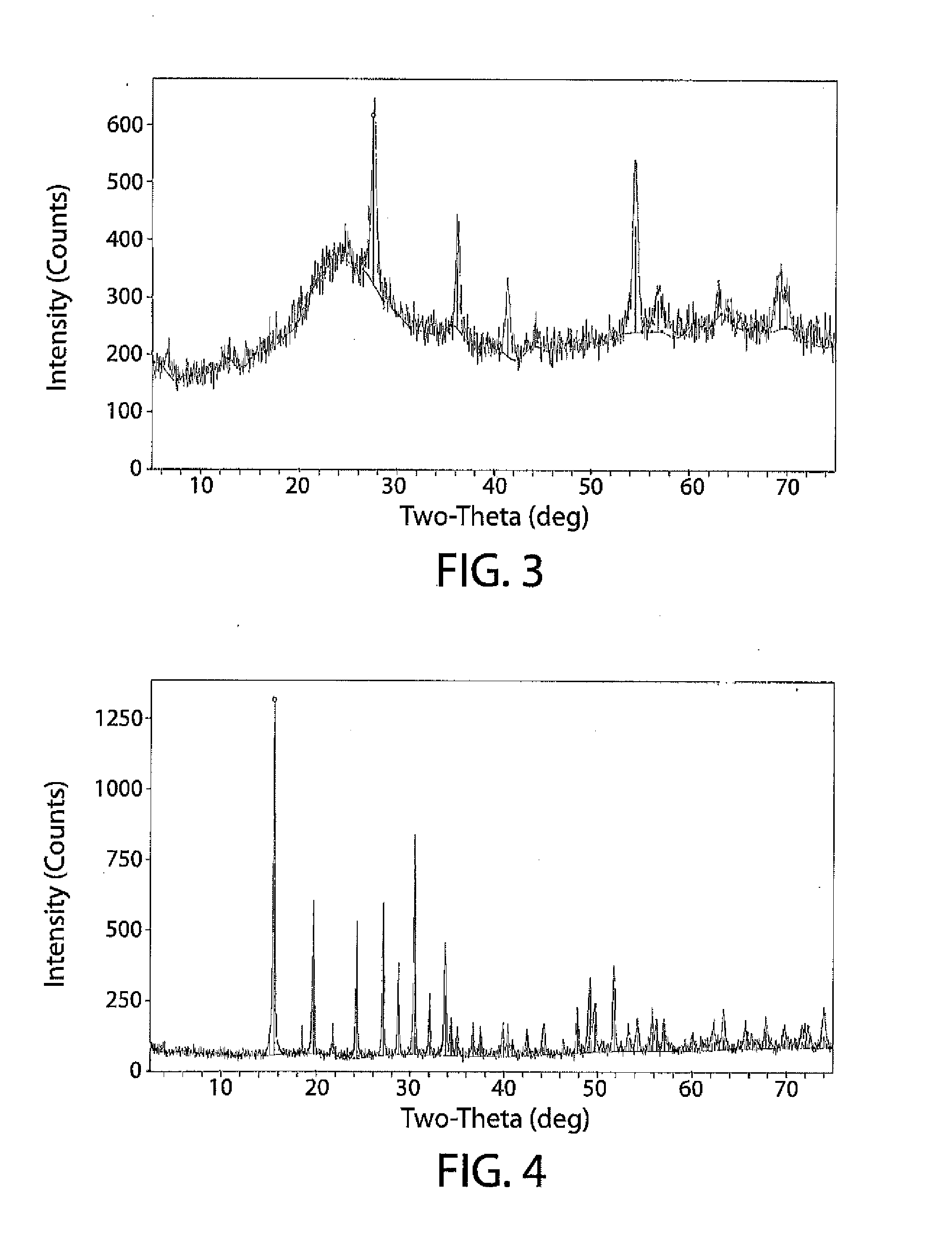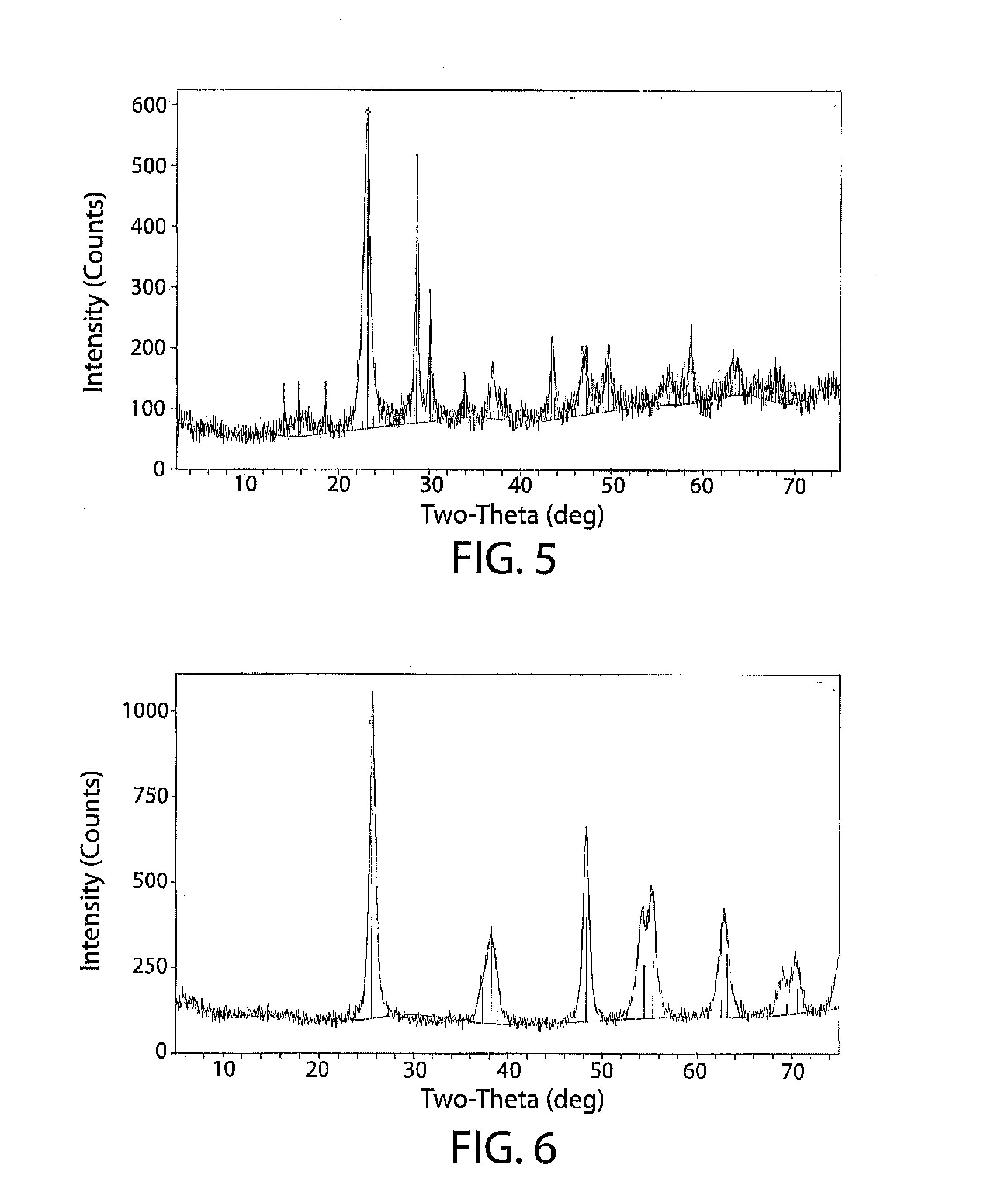PROCESS FOR PREPARING V-Ti-P CATALYSTS FOR SYNTHESIS OF 2,3-UNSATURATED CARBOXYLIC ACIDS
a technology of unsaturated carboxylic acid and catalyst, which is applied in the field of catalysis, can solve the problems of affecting the efficiency of the starting material, unable to inhibit the condensation reaction of these catalysts, and unable to meet the requirements of the catalys
- Summary
- Abstract
- Description
- Claims
- Application Information
AI Technical Summary
Benefits of technology
Problems solved by technology
Method used
Image
Examples
example 1
Preparation of an Amorphous V—Ti—P Catalyst Via Method A and Reactor Screening with an Anhydrous Liquid Feed
1. Preparation of V(I) H3PO4 Solution
[0170]The orange-beige ammonium metavanadate (9.75 g) was suspended in 50 mL of lactic acid and 200 mL of deionized water in a 500-mL single-necked round-bottomed flask. After heating at 70° C. for 1 hour, 85% orthophosphoric acid (52.5 g) was added to the clear blue vanadium solution at 70° C. over a 15-minute period to give a blue-green solution. Residual reactants were washed into the reaction flask with a minimal amount of water.
2. Preparation of V—Ti—P Catalyst
[0171]The 50 wt % titanium(IV) bis(ammonium lactate)dihydroxide solution (109.19 g) was added to a 1-L three-necked kettle reactor equipped with a condenser and a mechanical stirrer. The V / P solution from step 1 above was slowly poured into the Ti solution to give a blue suspension. The V / P flask was rinsed with 30 mL of water and the contents were added to the reaction flask. Th...
example 2
Preparation of an Amorphous V—Ti—P Catalyst Via Method G and Reactor Screening with an Aqueous Liquid Feed
[0198]The catalyst in this example was first prepared by suspending ammonium metavanadate (19.54 g) in 218.41 g of a 50 wt % titanium(IV) bis(ammonium lactate)dihydroxide solution followed by addition of 200 mL of deionized water in a 1-L three-neck kettle reactor equipped with a distillation head and a mechanical stirrer. The beige suspension was stirred at 700 rpm for 10 min at room temperature then 105.57 g of 85% phosphoric acid was added followed by a rinse with about 50 mL of water. There was an immediate color change to bright yellow and thickening of the mixture, then a change to green then pale green over 20 min. The suspension was then heated to reflux (oil bath set at 130° C.) and 220 mL of water collected via distillation over three hours. After cooling to room temperature, the resulting pale green semi-solid was scraped into a ceramic dish and calcined at 300° C. fo...
example 3
V—Ti—P Catalyst (Method A at 2× Scale) Lifetime Study with an Anhydrous Liquid Feed
[0203]The catalyst in this example was prepared via Method A (Example 1), but at twice the scale. The condensation reaction of acetic acid and trioxane (the formaldehyde source) in this example was performed as described in Example 1, except that a liquid feed composed of molar ratio 12 acetic acid / 1 trioxane was used at 325° C., 0.083 mL liquid feed / minute, and the carrier gases were nitrogen (49 SCCM) and air (21 SCCM). The reaction was run for twenty-seven hours. Also, a 25-mm outer diameter (21 mm inner diameter) quartz reactor tube with length=79 cm (31 inches) was used. Heat to the reactor was provided by an Applied Test Systems series 3210 three-element electric furnace having a heated zone 50 cm (19.5 inches) in length. Liquid products were collected in a three-necked flask fitted with a glycol chilled (0° C.) jacket. The third neck of the flask was connected to a water-cooled condenser, which...
PUM
| Property | Measurement | Unit |
|---|---|---|
| Substance count | aaaaa | aaaaa |
| Time | aaaaa | aaaaa |
| Solubility (mass) | aaaaa | aaaaa |
Abstract
Description
Claims
Application Information
 Login to View More
Login to View More - R&D
- Intellectual Property
- Life Sciences
- Materials
- Tech Scout
- Unparalleled Data Quality
- Higher Quality Content
- 60% Fewer Hallucinations
Browse by: Latest US Patents, China's latest patents, Technical Efficacy Thesaurus, Application Domain, Technology Topic, Popular Technical Reports.
© 2025 PatSnap. All rights reserved.Legal|Privacy policy|Modern Slavery Act Transparency Statement|Sitemap|About US| Contact US: help@patsnap.com



